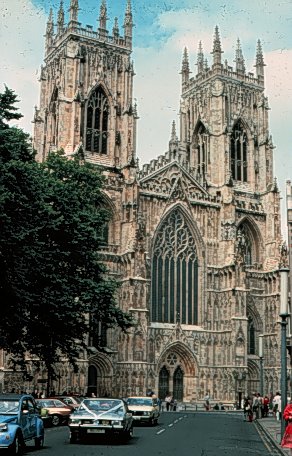
 |
York Cathedral
St. Mary's Abbey, ruins Bootham Bar (medieval gate) Walmgate Bar (medieval gate) Marketplace Shambles(medieval street) |
 |
York was one of the most powerful cities in England.
The Archbishop of York occupied the most prestigious place in the clerical hierarchy
of England, second only to the archbishop of Canterbury so that it is understandable
that Margery Kempe would made several visits to York Minster. She mention
early in her account (Ch. 10-11) that she and her husband, who still did not
agree to a chaste marriage, went to York; on the return trip he gave her his
ascent. The major event concerning the site of York involves Margery's later
accusation of heresy in 1517 (Ch. 50-52), after her return from Jerusalem.
She speaks of visiting an anchoress, who earlier had supported her, but who
now would not receive her. She describes many of the ecclesiastics, a
canon, one of the chantry priests at the Bishop's tomb, and also her interview
in the Minster's Chapter House. She
also describes the archbishop's palace and chapel at Cawood (now destroyed),
slightly south of the city where she was interviewed and gave credible answers
to all charges.